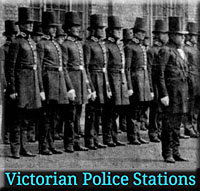The
Former Goulden Street Police and Fire Station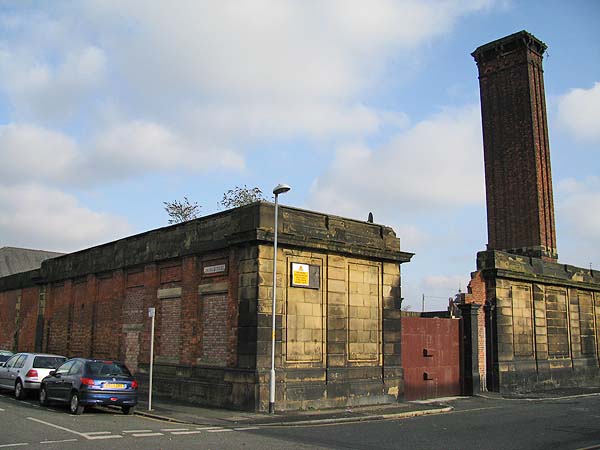 If it wasn't for the
prominent stark chimney of the former Ancoats Police
Station, you could easily walk by without being
attracted to the structure. In fact, in its
present state it seems to be nothing more than a brick
and stone curtain wall with a series of odd blue doors
running down one side. You might also be excused
for never having noticed it because unless you work at
one of the businesses in this part of Ancoats it is
unlikely that you would stroll by.
The documentation on
listed buildings in Manchester describes this structure
as the Grade II listed Ancoats Police and Ambulance
Station. The Pevsner's Guide to Manchester calls
it the Ancoat's Police and Fire Station, built in
1870. You can see it below when it was still in
operation. The images are shown here with
the permission of the Greater Manchester Police Museum
and Archive. If you visit their Flickr
Photostream you can see other interesting
historical images.
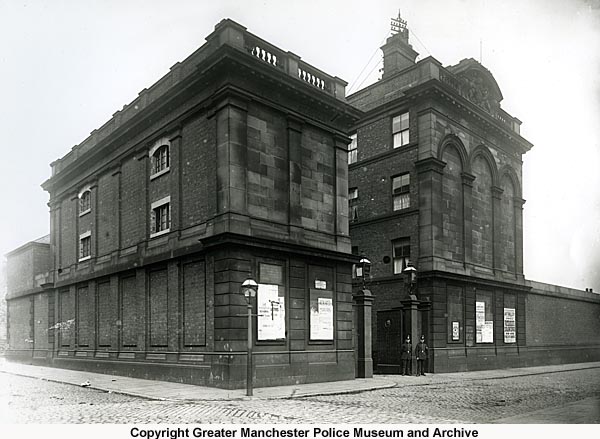 Pevsner says that
mounted police were stationed here and within the
courtyard there were stables. The images below
verify this and the idea that it was an ambulance
station. The Slater's Directory of Manchester
& Salford for 1909 lists the facility as follows:
"Goulden Street Fire Station, Frederick Lees, Station Officer" "Goulden Street Police Station - A Division. Inspectors Wm Stephen Kearney and Bernard Vardom. Ambulance Inspectors, Frederick Walker, William Maugham, William Walket and John Sadler." ********************
Bob Bonner of the
Greater Manchester Fire Service Museum gave me this
summary of the Fire Station at Goulden Street:
The
station opened in March 1872, as the B Division
Headquarters of the Manchester Police. It was a
replacement for an older station in Swan Street,
which had housed a small hand fire pump since
1863. At this time, the fire brigade came
under the control of the Chief Constable, as a
typical urban "police fire brigade," common in many
cities. It is understood that ambulances were
also operated by the police from this site. When
Goulden Street opened, the fire brigade presence was
increased (over that at Swan Street) by transferring
an engine and two horses from the Chief fire station
in Jacksons Row. Other minor changes in
allocation occurred over the period the station was
in operation. A steam fire engine was
startioned there from 1891.
Permanent fire brigade staff at Goulden Street
varied between 5 and 10 over the years of operation.
A Watch Committee report dated September 1889 describes Goulden Street as consisting of : No.1
Block Police station, offices,
parade room and dwellings over
No.2
Block Stables, van and engine
sheds, drying room with hay loft and dwellings
over
No.3
Block FIremen's room, bath room
and dwelling over
Many people think that the Bendex (late Bennett) Street, which resembles a multi-bay fire station was where the fire brigade was housed, but in fact this was in a much smaller section of the building, near to the Cross Keys Street/Goulden Street corner, in a kind of covered yard. It closed as a fire station on 4th April 1916 and the building was handed over to the police. The building suffered major fire damage in November 2002 when being used as a fireworks store, during the national fire service strike. Fred Lees joined the brigade on 7th July 1891 and was promoted to Station Officer on 20th December 1906. He retired on 31st July 1917, by which time he must have moved from Goulden Street as it was closed by that date. ***********************
The image below was
obviously taken on Chadderton Street in front of the
doors that still remain.
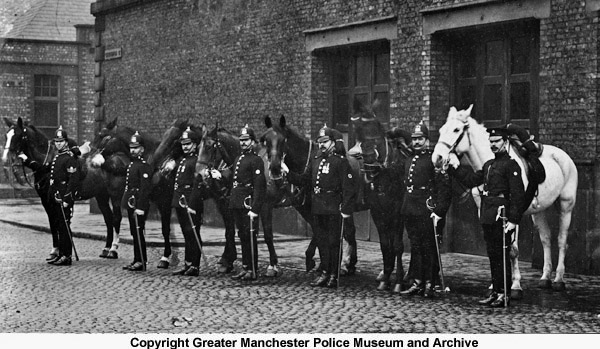 The two image below
were taken at the same place and show the horse
ambulance. Three doorways are visible in this
photograph.
 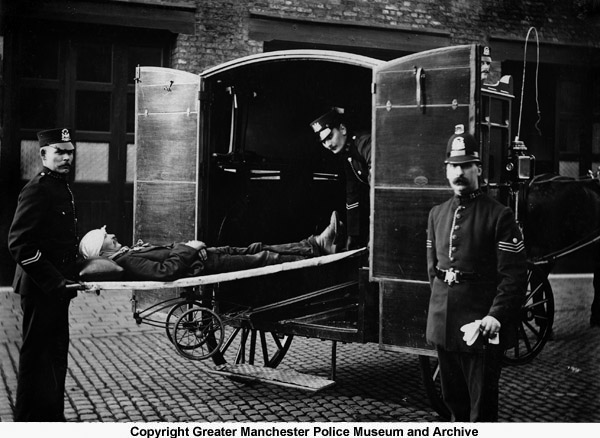 There are only two doorways on Chadderton Street today but you can see below that a third doorway has been bricked-up at some point in time. 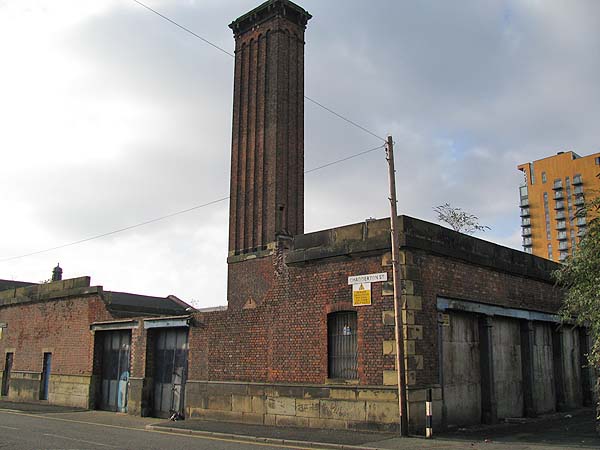 The aerial
photograph below, taken in 1953, shows the station
when all of the buildings within the wall were still
in place. The red arrow points towards the
police station.
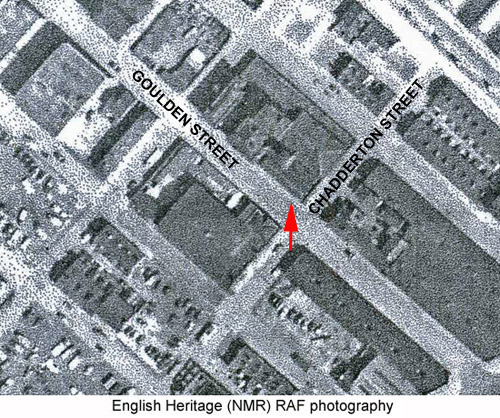 Pevsner also says of the building that it has none of the Gothic features common in police stations of that era. Instead, "something more akin to a stronghold was required in this notoriously lawless area." Along what is now Bendix Street there are 14 doorways separated by rather clasical looking pillars. 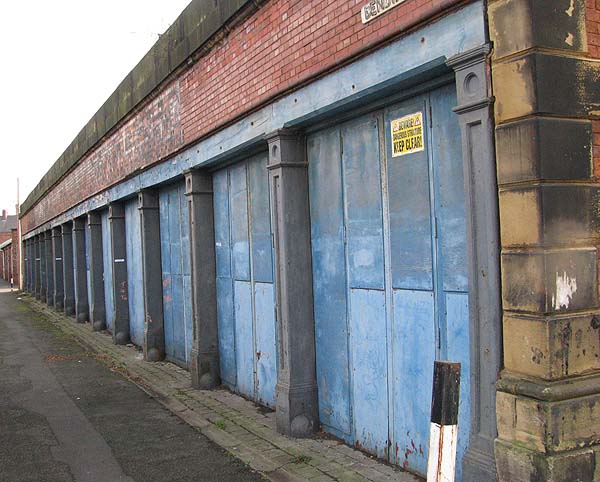 To see an in-depth history of the
development of a professional police force and its
police stations in Manchester, click on the button
below.
Close Window |
